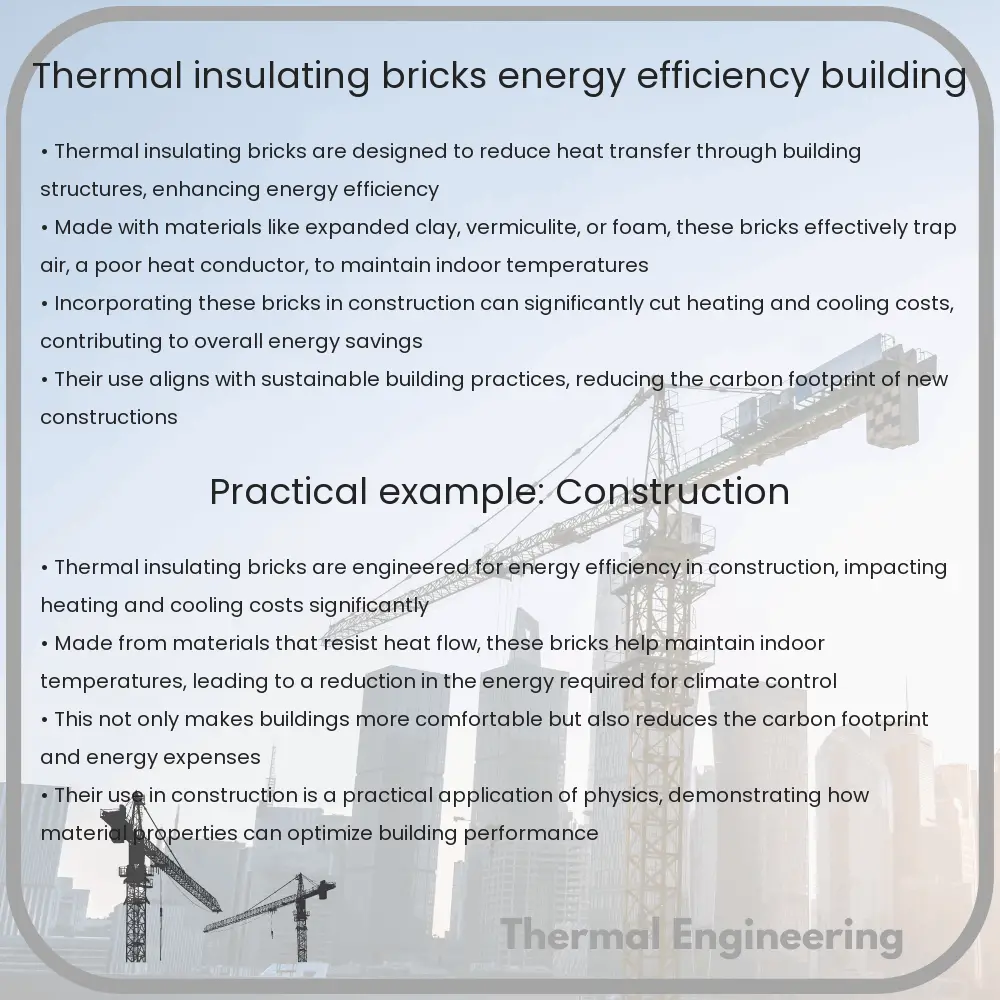Learn about thermal insulating bricks, innovative building materials that enhance energy efficiency and sustainability in construction.

Thermal Insulating Bricks: Enhancing Energy Efficiency in Buildings
Thermal insulating bricks play a crucial role in the construction industry by reducing the energy consumption of buildings. This innovative building material significantly contributes to environmental sustainability and cost-saving for homeowners and businesses alike. Let’s explore how these bricks work and why they are beneficial.
What are Thermal Insulating Bricks?
Thermal insulating bricks, also known as insulating firebricks or lightweight insulating bricks, are a type of building brick designed to provide high levels of thermal insulation. These bricks are typically made from materials that have a low thermal conductivity, such as expanded clay, perlite, or vermiculite, mixed with traditional clay or cement. The key characteristic of these bricks is their ability to minimize the rate at which heat passes through walls, thereby maintaining a building’s temperature more effectively.
How Do Thermal Insulating Bricks Work?
The effectiveness of thermal insulating bricks is primarily based on their composition and structure. These bricks are usually porous, containing trapped air within their structure, which is an excellent insulator. Air has a very low thermal conductivity, meaning it resists the flow of heat. By trapping air within the brick, the heat transfer through the brick – and subsequently through the wall of the building – is greatly reduced.
Benefits of Thermal Insulating Bricks
- Energy Efficiency: By slowing the rate of heat transfer, these bricks help maintain a building’s internal temperature, reducing the need for heating in winter and cooling in summer. This can significantly lower energy bills and the building’s carbon footprint.
- Cost Effectiveness: Although the initial cost might be higher than conventional bricks, the savings on energy bills can quickly offset this initial investment, making them a cost-effective solution in the long term.
- Comfort: Buildings constructed with thermal insulating bricks typically have a more consistent indoor climate, enhancing comfort for occupants.
- Sound Insulation: The porous nature of these bricks not only insulates against heat but also against sound, providing a quieter indoor environment.
- Fire Resistance: Many thermal insulating bricks offer improved fire resistance due to their composition and structure.
- Eco-Friendliness: By reducing the energy required for heating and cooling, these bricks help lower greenhouse gas emissions, contributing to a more sustainable construction model.
Applications of Thermal Insulating Bricks
Due to their insulating properties, these bricks are particularly useful in climates with extreme temperatures – both hot and cold. They are applicable in various building types, including residential, commercial, and industrial structures. Moreover, their fire resistance and sound insulation properties make them suitable for special projects like sound barriers and firewalls in hazardous environments.
Conclusion
Thermal insulating bricks represent a significant advancement in building materials, providing multiple benefits ranging from improved energy efficiency to enhanced living comfort. By incorporating these bricks into new buildings or renovations, property owners can enjoy lower energy costs, increased comfort, and a smaller environmental footprint. As we continue to push for more sustainable construction practices, the role of thermal insulating bricks is likely to expand, making them a key component of energy-efficient building design.